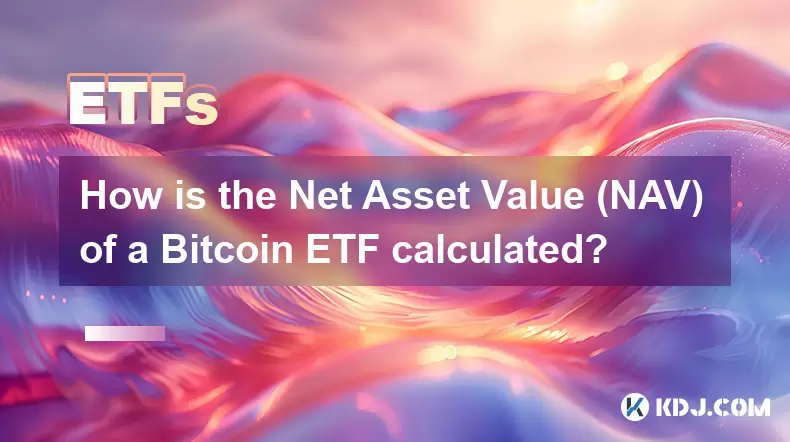-
 Bitcoin
Bitcoin $109,507.9823
0.43% -
 Ethereum
Ethereum $2,716.0274
3.79% -
 Tether USDt
Tether USDt $1.0003
-0.01% -
 XRP
XRP $2.3859
3.05% -
 BNB
BNB $665.2705
0.56% -
 Solana
Solana $154.6874
1.56% -
 USDC
USDC $1.0002
0.02% -
 TRON
TRON $0.2896
1.05% -
 Dogecoin
Dogecoin $0.1738
1.67% -
 Cardano
Cardano $0.6117
3.72% -
 Hyperliquid
Hyperliquid $40.3052
3.82% -
 Sui
Sui $2.9817
2.08% -
 Bitcoin Cash
Bitcoin Cash $505.0944
0.71% -
 Chainlink
Chainlink $14.0820
1.96% -
 Stellar
Stellar $0.2902
12.90% -
 UNUS SED LEO
UNUS SED LEO $9.0423
-0.34% -
 Avalanche
Avalanche $18.7084
1.54% -
 Hedera
Hedera $0.1714
6.33% -
 Shiba Inu
Shiba Inu $0.0...01218
2.48% -
 Toncoin
Toncoin $2.8261
1.24% -
 Litecoin
Litecoin $88.8228
1.59% -
 Monero
Monero $319.1344
2.71% -
 Polkadot
Polkadot $3.5479
2.69% -
 Dai
Dai $1.0001
0.00% -
 Ethena USDe
Ethena USDe $1.0010
0.06% -
 Uniswap
Uniswap $8.2690
6.49% -
 Bitget Token
Bitget Token $4.3622
1.19% -
 Aave
Aave $298.5989
2.11% -
 Pepe
Pepe $0.0...01042
1.97% -
 Pi
Pi $0.4663
1.15%
How to find real-time data on Bitcoin ETF fund flows?
Real-time Bitcoin ETF flow data helps investors track market sentiment by showing capital movements in and out of funds, offering insights into potential price trends.
Jul 09, 2025 at 09:28 am

Understanding Bitcoin ETF Fund Flows
Bitcoin Exchange-Traded Funds (ETFs) have become a popular way for investors to gain exposure to Bitcoin without directly holding the cryptocurrency. Real-time data on Bitcoin ETF fund flows refers to the movement of capital into or out of these ETFs at any given moment. This information is crucial for understanding investor sentiment and market dynamics surrounding Bitcoin.
Why Real-Time Data Matters
For traders and institutional investors, tracking real-time fund flows can provide insights into market trends and potential price movements. When large inflows occur, it may indicate growing confidence in Bitcoin’s value. Conversely, significant outflows could signal uncertainty or bearish sentiment. Accessing this data helps investors make informed decisions based on current market behavior rather than outdated reports.
Sources for Real-Time Bitcoin ETF Flow Data
Several platforms offer real-time tracking of Bitcoin ETF fund flows. One of the most commonly used tools is Bloomberg ETF Analytics, which provides detailed breakdowns of inflows and outflows across various ETFs, including those tied to Bitcoin. Another reliable source is Morningstar Direct, which offers institutional-grade data on asset flows and fund performance.
Additionally, CoinShares’ Insights Dashboard provides live updates on digital asset fund flows, including Bitcoin ETFs. These platforms often include visualizations that allow users to monitor changes over time and compare different funds side by side.
How to Use Bloomberg ETF Analytics for Bitcoin ETF Tracking
To access real-time flow data using Bloomberg:
- Open the Bloomberg Terminal and type “ETFG” to launch the ETF analytics module.
- Search for Bitcoin-related ETFs such as IBIT, ARKK, or BITO.
- Select the specific ETF you want to analyze.
- Navigate to the “Flows” tab, where real-time net asset value (NAV) changes and daily inflows/outflows are displayed.
- Customize the time frame to view data from the past 24 hours, week, or month.
This process allows users to see how much money is moving in and out of Bitcoin ETFs at any given time, helping them gauge short-term market sentiment.
Utilizing CoinShares for Digital Asset Fund Flow Monitoring
CoinShares offers a public-facing dashboard that tracks institutional investment flows into crypto assets. To use this tool effectively:
- Visit the CoinShares Institutional Research page.
- Look for the section labeled “Fund Flows.”
- Click into the interactive charts that show weekly and daily net inflows into Bitcoin ETFs and ETPs.
- Filter by asset class to isolate Bitcoin-specific flows.
- Review accompanying commentary and analysis for context behind the numbers.
This platform is especially useful for investors who want to track institutional activity without needing access to expensive financial terminals.
Tips for Interpreting Real-Time Flow Data
When analyzing real-time fund flows, it’s important to understand what the numbers represent. Large inflows might suggest increased demand, but they should be cross-referenced with price action to confirm whether buying pressure is translating into higher prices. Similarly, sudden outflows may not always result in immediate price drops if other market forces are at play.
Another key consideration is the size of the ETF relative to its inflows or outflows. A small ETF experiencing a large percentage inflow might not have the same impact as a major fund seeing similar movements. Investors should also pay attention to the timing of flows—end-of-day figures might differ significantly from intraday movements due to market volatility.
Frequently Asked Questions
Q: Can I get real-time Bitcoin ETF flow data for free?
A: Yes, platforms like CoinShares and some sections of Bloomberg offer limited real-time data for free. However, full access to advanced features typically requires a subscription or institutional account.
Q: How accurate is real-time ETF flow data?
A: Real-time data from reputable sources like Bloomberg or Morningstar is highly accurate, though slight delays or discrepancies can occur depending on the provider and data feed used.
Q: What does a sudden outflow from a Bitcoin ETF mean?
A: A sudden outflow may reflect short-term investor caution, profit-taking, or shifting market sentiment. It doesn’t necessarily predict long-term trends without additional context from broader market indicators.
Q: Are Bitcoin ETF flows reported globally or regionally?
A: Most platforms report flows on a per-fund basis, which can be global or regional depending on the ETF’s listing and investor base. For example, U.S.-listed ETFs primarily reflect North American investor behavior.
Disclaimer:info@kdj.com
The information provided is not trading advice. kdj.com does not assume any responsibility for any investments made based on the information provided in this article. Cryptocurrencies are highly volatile and it is highly recommended that you invest with caution after thorough research!
If you believe that the content used on this website infringes your copyright, please contact us immediately (info@kdj.com) and we will delete it promptly.
- NEXBRIDGE, NEXPLACE, and the Bitcoin Ecosystem: Building a New Financial Frontier
- 2025-07-09 23:10:13
- MEXC Launchpad & PUMP Token: Grab a 40% Discount?
- 2025-07-09 22:50:12
- Trade System Revolution: How XDC and the End of Faxes Are Reshaping Finance
- 2025-07-09 23:10:13
- Ripple, CLARITY Act, and the XRP Case: A New York Minute on Crypto Regulation
- 2025-07-09 23:50:12
- No Rs 50 Coin? Delhi HC Hears Why India Prefers Banknotes
- 2025-07-09 23:15:11
- No Rs 50 Coin? Delhi HC Hears Why Banknotes Reign Supreme
- 2025-07-09 23:50:12
Related knowledge

Bitcoin ETF vs buying Bitcoin on an exchange like Coinbase
Jul 09,2025 at 10:15am
What is a Bitcoin ETF?A Bitcoin ETF (Exchange-Traded Fund) is a financial product that tracks the price of Bitcoin without requiring investors to own ...

How do you short a Bitcoin ETF?
Jul 09,2025 at 06:14pm
Understanding the Basics of Shorting a Bitcoin ETFShorting a Bitcoin Exchange-Traded Fund (ETF) involves betting that the price of the ETF will fall. ...

Are Bitcoin ETFs covered by SIPC insurance?
Jul 09,2025 at 05:56am
What is SIPC Insurance?SIPC insurance, formally known as the Securities Investor Protection Corporation (SIPC), is a U.S.-based organization that prov...

How to track real-time Bitcoin ETF flows?
Jul 09,2025 at 12:56pm
What is a Bitcoin ETF and Why Track Its Flows?A Bitcoin Exchange-Traded Fund (ETF) allows investors to gain exposure to Bitcoin without directly ownin...

How is the Net Asset Value (NAV) of a Bitcoin ETF calculated?
Jul 09,2025 at 11:56pm
Understanding the Net Asset Value (NAV) of a Bitcoin ETFThe Net Asset Value (NAV) is a critical metric for any Exchange-Traded Fund (ETF), including t...

Can I buy a Bitcoin ETF in my traditional IRA?
Jul 09,2025 at 10:56pm
What Is a Bitcoin ETF?A Bitcoin ETF (Exchange-Traded Fund) is an investment vehicle that tracks the price of Bitcoin without requiring investors to di...

Bitcoin ETF vs buying Bitcoin on an exchange like Coinbase
Jul 09,2025 at 10:15am
What is a Bitcoin ETF?A Bitcoin ETF (Exchange-Traded Fund) is a financial product that tracks the price of Bitcoin without requiring investors to own ...

How do you short a Bitcoin ETF?
Jul 09,2025 at 06:14pm
Understanding the Basics of Shorting a Bitcoin ETFShorting a Bitcoin Exchange-Traded Fund (ETF) involves betting that the price of the ETF will fall. ...

Are Bitcoin ETFs covered by SIPC insurance?
Jul 09,2025 at 05:56am
What is SIPC Insurance?SIPC insurance, formally known as the Securities Investor Protection Corporation (SIPC), is a U.S.-based organization that prov...

How to track real-time Bitcoin ETF flows?
Jul 09,2025 at 12:56pm
What is a Bitcoin ETF and Why Track Its Flows?A Bitcoin Exchange-Traded Fund (ETF) allows investors to gain exposure to Bitcoin without directly ownin...

How is the Net Asset Value (NAV) of a Bitcoin ETF calculated?
Jul 09,2025 at 11:56pm
Understanding the Net Asset Value (NAV) of a Bitcoin ETFThe Net Asset Value (NAV) is a critical metric for any Exchange-Traded Fund (ETF), including t...

Can I buy a Bitcoin ETF in my traditional IRA?
Jul 09,2025 at 10:56pm
What Is a Bitcoin ETF?A Bitcoin ETF (Exchange-Traded Fund) is an investment vehicle that tracks the price of Bitcoin without requiring investors to di...
See all articles

























































































